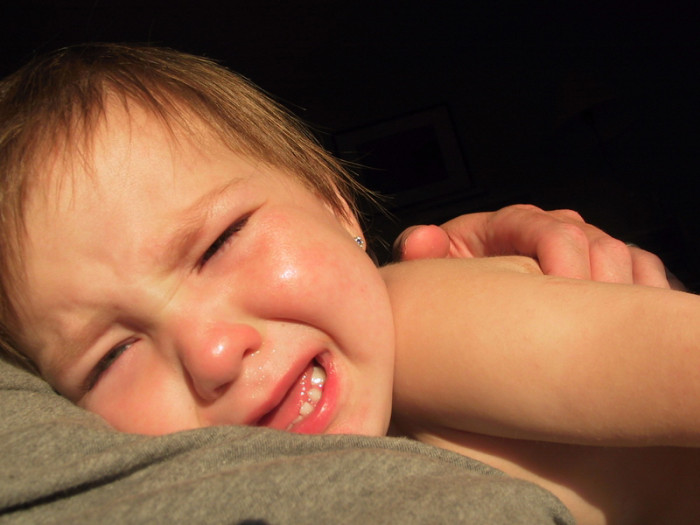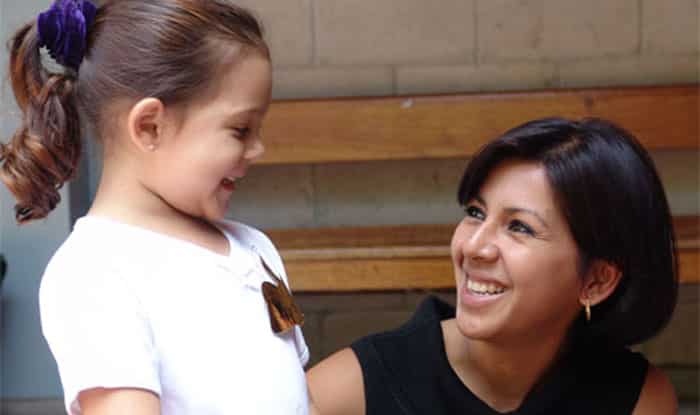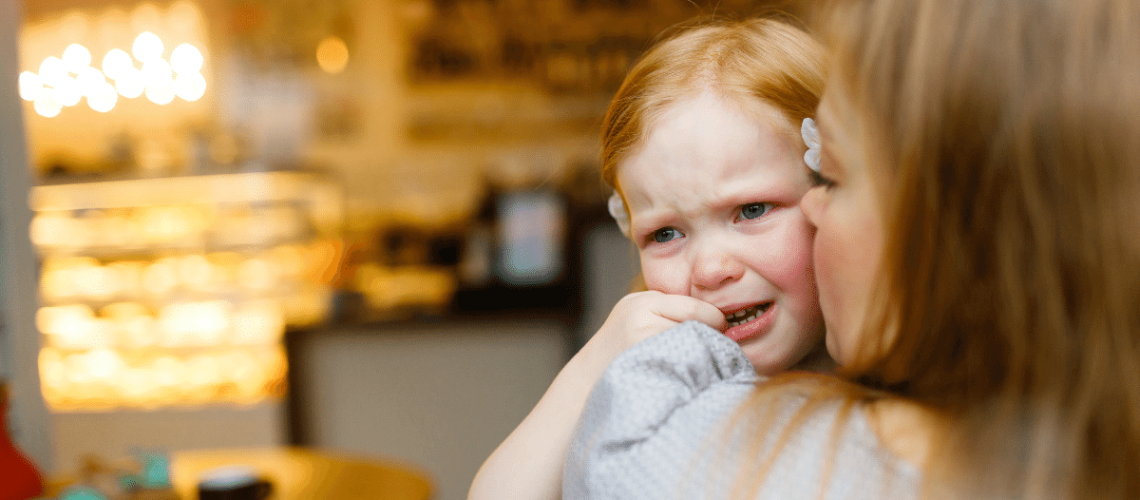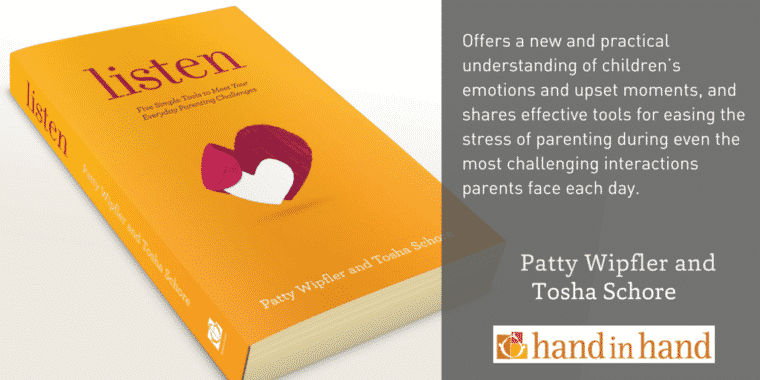I couldn’t have stopped crying even if I had wanted to. I don’t remember now why I was crying, but I remember the look on my father’s face as he begged me to stop. “What am I going to do with you? All the neighbors are going to think you’ve gone crazy!” It was summer and the windows were open. And I was experiencing heartbreak like only a four year-old can.

Forty years later, what has stayed with me is the deeply jarring alienation brought on by my father’s inability to cope with, let alone understand, my emotional experience. He just wanted it to stop. How could my father, who I adored beyond words, plead with me not to express an experience that clearly needed his comforting and attention? Shame and confusion were layered over whatever the original hurt may have been. If my father complained that I no longer told him anything when I was a teen, he was reaping seeds he planted when I was very small and needed him to listen.
Connecting with children when they express their emotional experience supports the essential elements of the parent-child relationship.
A parent like my father, who begs their child to stop feeling their feelings, at the very least misses a wonderful opportunity for connection, attunement and emotional closeness that could have been used to strengthen the parent-child bond for life. Not that it’s always easy to focus on connecting with children in these moments. Setting aside your agenda and stopping to warmly devote your attention to a child screaming their way through the grocery store is farther than most parents would want to take this model. But building acceptance into a connected relationship wherever possible has clear, measurable benefits.
The Education Training Research Associates (ETR), with funding from the Annie E. Casey Foundation, conducted a literature review on the effects of parents developing a secure connection with their children early in life. Their paper, Parent-Child Connectedness: Implications for Research, Interventions, and Positive Impacts on Adolescent Health, 2004, provides an excellent guide for understanding the true impact a strong parent child connection can have on children.
ETR uses the term Parent-Child Connectedness, or PCC, to expand the idea of attachment. They define PCC as, “seeing the interaction between parents and children not just as individuals but as part of an on-going, dynamic relationship” (ETR, 2004; p. 5). The parent-child connection endures beyond the early infant years, and is sustained in different ways throughout the life of the child.
ETR’s review of over 600 research studies concludes that Parent-Child Connectedness is the “super-protective factor” against negative outcomes in adolescence. Having a close, connected relationship with a caring adult, an adult who listens to the child’s feelings, is the single strongest indicator that an adolescent will reach adulthood without experiencing teen pregnancy or violence, without becoming addicted to drugs or tobacco, and without dropping out of high school. Fostering this kind of relationship with our own children takes us beyond emotional intelligence, into a space where the emotion we each experience is accepted, experienced and processed.
While Emotional Intelligence is a wonderful place to start, the key for me has been remembering that experiencing intense emotion takes neurobiological precedence over thinking about that emotion. In other words, it’s hard to think and feel at the same time.
Dr. Dan Siegel’s work explains the details of this process, but as a non-neurobiologist I imagine the available energy or attention moving through the three main parts of the brain. The brain stem makes sure you’re breathing, your heart is beating and the salts in your blood are balanced – it keeps your body alive. Then the limbic system, the seat of emotional response, gets the energy next. If feelings have been triggered, they can highjack us until we are able to process them. This expression of emotion is a normal, universal human response to emotional stress. It’s as natural as the impulse to swear when you hit your thumb with the hammer. The higher cognitive functions are the last to receive the mind’s attention. You can’t balance your checkbook if you can’t breathe, and likewise, you can’t balance your checkbook when you are overwhelmed by strong emotions.
Children can’t talk to you about their emotions and feel their emotions fully at the same time. And they can’t fully process their emotions in isolation. The human mind is built to work in connection with other human minds. What I needed at four is the same thing kids of all ages need, a caring adult with whom one can share the full range of experience without fear of rejection, shaming or condemnation.
 Here’s Patty Wipfler’s explanation of the process:
Here’s Patty Wipfler’s explanation of the process:
We are so accustomed to seeing the world only from our own vantage point. If we don’t feel sad, no one else should, either. But children’s feelings are like their own personal weather system, which is affected by forces often unseen by you.
To tell your child he should feel happy when he is sad is roughly as effective as telling a rainstorm to go away. Phrases like “I’m sorry you feel so sad” or “I’ll stay right here with you while it’s hard” give your child permission to address and work through bad feelings. Phrases like “It’s only a torn paper. Quit acting like such a baby!” only shame a child. They work against your goal of helping your child rebuild his sense of well-being.
As you listen, you are not necessarily condoning your child’s feelings, nor are you spoiling him. You are helping him recover. Children cry only when they are too upset to think. Feelings of upset can overpower a child and drive him to do things that don’t make sense. As you listen, you drain the power these feelings have over your child. His own good judgment will return once you’ve listened thoroughly.
From the Hand in Hand Toolbox
- Handle off-track behavior calmly using Five Tools That Will Transform Your Parenting
- Find out how spending 10 minutes of Special Time can build connections and reduce challenging behaviors in this free video series – with free checklist
- Get more connection parenting tips and tools in our monthly newsletter along with a free booklet on children's emotions


